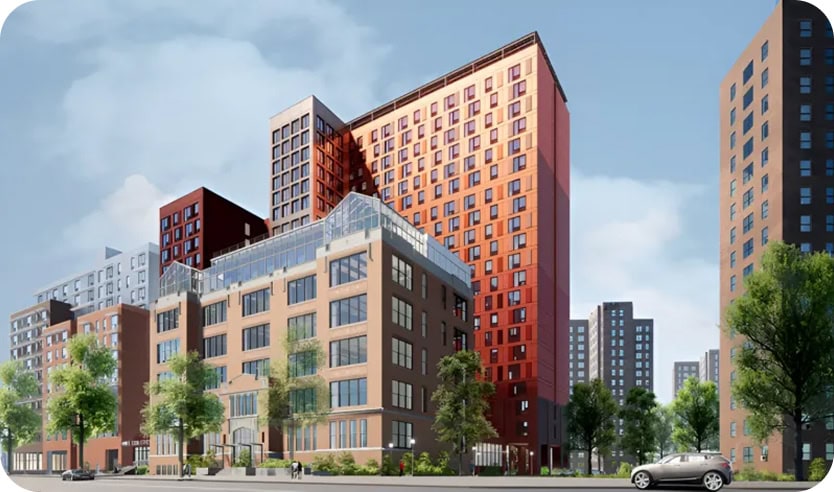Raising the Standard: How Lettire Streamlined Site Access and Cut Onboarding Time with BiltOn

Outcomes
Facial recognition replaces lost badges and disputes with secure entry logs.
QR-code check-in slashes hours of admin, freeing foremen and safety managers for on-site work.
Integrated data and audit trails reduce disputes, support DOB alignment, and build confidence.
Case Study Overview
Lettire Construction has made its name in one of the toughest environments to build – New York City. The firm focuses on affordable housing, with projects across the five boroughs and nearby North Jersey.
As the city’s housing needs have grown more complex, so too have the demands on contractors. For Greg Stewart, Director of Preconstruction and Operations at Lettire Construction Corp., the challenge was more than building quality safely, it was building efficiently, with fewer delays, tighter compliance, and better visibility on every site.
In late 2024, Lettire adopted BiltOn across its projects to address persistent friction around access control, onboarding, and record-keeping. The impact was immediate, so much so that after six months Lettire moved to an enterprise agreement with all their new projects because they see BiltOn as integral to their success.
Fixing the Identity Problem
The tipping point for Lettire came down to something simple: identity. “You can’t lose your face,” Greg quips, highlighting the limitations of traditional badging systems. “Badges get lost, phones get forgotten. With facial recognition, you eliminate that problem. It’s secure, accurate, and you know exactly who walked through your gate.”
Beyond access control, the data BiltOn provides, has real operational weight. “When you’ve got a dispute over insurance or labor claims, it’s hard to argue with a facial recognition log. There’s no ambiguity.” And because BiltOn’s system fits into standard NYC turnstiles, it works within the tight constraints of urban job sites: a detail that matters more than most vendors realize.
Onboarding That Doesn’t Slow the Site
Construction rarely moves in straight lines. Schedules change, new subcontractors arrive, and the number of workers on-site can double overnight. For years, getting new crews processed meant hours lost to badging machines, paper forms, and long queues.
BiltOn replaced that with a simple QR-code system that lets workers enter their own details before they arrive. “If a concrete sub brings 30 guys one morning, they can all load their info from their phones. Our team just verifies and moves on,” Greg said. “That used to be a two-hour job. Now it takes minutes.”
That change isn’t just about saving time, it’s about rebalancing priorities. When foremen and site safety managers spend their mornings buried in onboarding, the rest of the job suffers. “The real value is in freeing up those people to be where they’re needed—on the job, not in the trailer.”
Laying the Groundwork for Smarter Workflows
While Lettire’s early use of BiltOn focused on onboarding and access, the team sees more to explore. The Procore integration and DOB alignment are starting points for deeper digital coordination, and upcoming projects will offer a clean slate to trial safety checklists and automated audit flows.
“We’ve got a new group coming in, and they’re a little more open to digital tools. That gives us a chance to push further into what the system can do,” Greg said. The goal is to reduce administrative overhead without losing track of compliance, safety, or documentation. In his words: “If we can link the third-party audits straight into the platform, that’s a win for everyone.”
Cost, Reframed
Early on, cost was a sticking point. BiltOn wasn’t the cheapest option on the table. But once the team started quantifying the hours saved—and the downstream value of better data—the decision held up.
“If you’ve got your super tied up printing badges, they’re not doing what they should be doing. If your safety guy is stuck onboarding instead of walking the site, that’s a gap in your coverage. The system doesn’t just save money—it clears the way for people to focus on their actual jobs.”
Building With Purpose
For Greg, the adoption of BiltOn is part of a broader ethos. The firm specializes in affordable housing that doesn’t compromise quality and sustainability. These aren’t cookie-cutter builds. Many include features like prefabricated façades, geothermal systems, and high-spec finishes.
“Affordable housing gets a bad reputation for looking basic. We don’t build that way,” Greg said. “These are award winning projects. You see it when you go to the galas, when residents talk about where they live. You realize the impact and proud to say, ‘yeah, we built that’.”
The tech stack now reflects the same standards as the buildings. Not flashy. Not wasteful. Just well thought through.
Lettire Construction is currently rolling out BiltOn across multiple NYC sites, with additional phases planned. The firm continues to lead in affordable housing development by combining strong community values with operational precision.
About Lettire Construction
Lettire Construction, founded in 1979 by brothers Nicholas and Gerard Lettire, has carved a reputation as a powerhouse in mixed-income, affordable, supportive, and institutional housing in the New York metropolitan area. They back New York City’s ambitious plan to build 800,000 homes by 2033.
With more than 50 completed projects delivering over 4,000 apartments—over $1.7 billion in hard costs—Lettire wields significant influence in development. Their pipeline includes 10 active projects totaling around 3,000 units and exceeding $1 billion in hard costs.
Headquartered in East Harlem since inception, Lettire has deeply rooted ties to its neighborhood—from jobs to philanthropy, engaging with local crews and community organizations to anchor redevelopment with equity.


